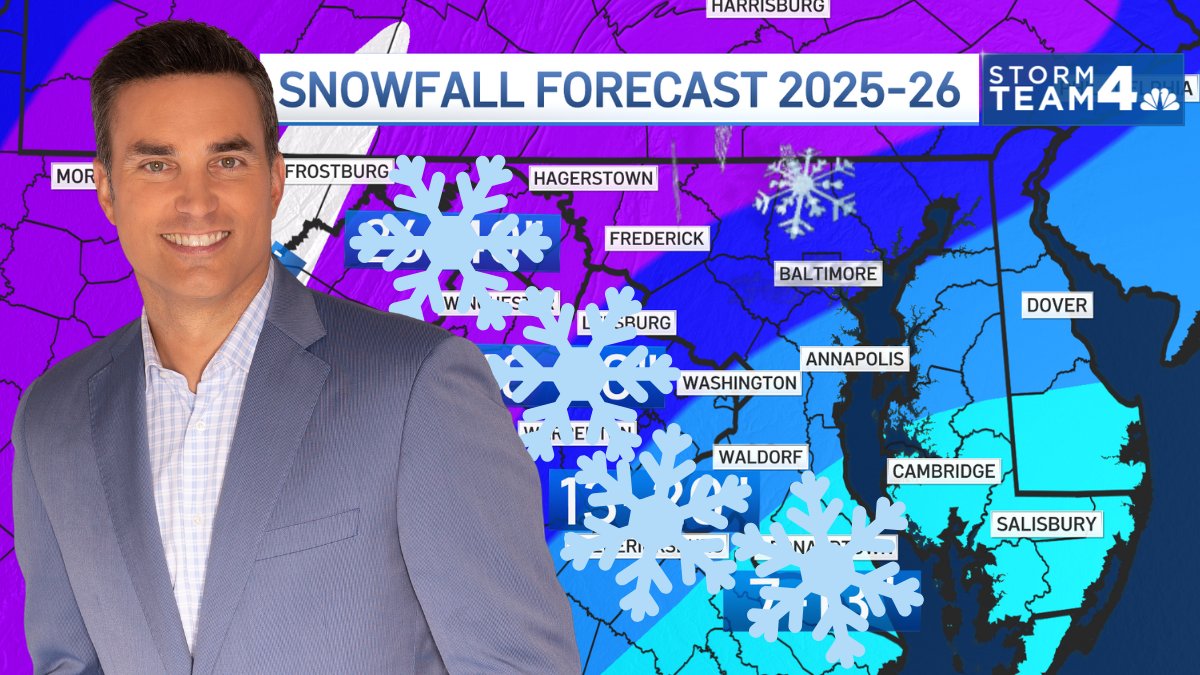A geomagnetic storm lit up the skies as far south as Florida late Tuesday – and some in the D.C. area were treated to red, purple and green hues splashed overhead.
The aurora was visible in areas including Bowie and Mount Airy in Maryland, plus Vienna and Shenandoah National Park in Virginia, viewers told News4.
One X user shared a time-lapse video. You can tell there’s cloud cover in the video, Storm Team4 Meteorologist Chuck Bell said.
“But the clouds were able to be illuminated by the northern lights above them, so that helped a little bit,” Bell said.
Another surge of solar energy could make the aurora visible again on Wednesday, and Storm Team4 Meteorologist Chuck Bell says clearer skies will help your chances of seeing it (especially if you’re away from urban light pollution).
The aurora was visible over much of the country as geomagnetic storms reached strong and severe conditions, space weather forecasters with the National Oceanic and Atmospheric Administration said.
Severe geomagnetic storms could disrupt radio and GPS communications, according to the forecasters.
How bright the auroras are and how far south they are visible will depend on when the solar bursts get here and how they interact with Earth’s atmosphere. The vibrant displays could be visible across much of the northern U.S., and as far south as Alabama and Northern California.
How to see the northern lights in the D.C. area
The best aurora views may come from phone cameras, which are better at capturing light than the naked eye.
Daniel Weatherholt was able to photograph a view of the aurora over the National Cathedral in D.C. last year.
Go to a local or national park away from lights for your best chance to catch a glimpse of the phenomenon. Whenever you’re skygazing, avoid looking at your phone and other lights for several minutes to give your eyes a chance to adjust.
How northern lights happen
The sun is at the maximum phase of its 11-year activity cycle, making the light displays more common and widespread. Colorful northern lights have decorated night skies in unexpected places and space weather experts say there are more auroras still to come.
Aurora displays known as the northern and southern lights are commonly visible near the poles, where charged particles from the sun interact with Earth’s atmosphere.
Skygazers are spotting the lights deeper into the United States and Europe because the sun is going through a major face-lift. Every 11 years, its poles swap places, causing magnetic twists and tangles along the way.
Last year, the strongest geomagnetic storm in two decades slammed Earth, producing light displays across the Northern Hemisphere. And soon afterward, a powerful solar storm dazzled skygazers far from the Arctic Circle when dancing lights appeared in unexpected places including Germany, the United Kingdom, New England and New York City.
The sun’s active spurt is expected to last at least through the end of this year, though when solar activity will peak won’t be known until months after the fact, according to NASA and NOAA.
How solar storms affect Earth
Solar storms can bring more than colorful lights to Earth.
When fast-moving particles and plasma slam into Earth’s magnetic field, they can temporarily disrupt the power grid. Space weather can also interfere with air traffic control radio and satellites in orbit. Severe storms are capable of scrambling other radio and GPS communications.
In 1859, a severe solar storm triggered auroras as far south as Hawaii and set telegraph lines on fire in a rare event. And a 1972 solar storm may have detonated magnetic U.S. sea mines off the coast of Vietnam.
Space weather experts aren’t able to predict a solar storm months in advance. Instead, they alert relevant parties to prepare in the days before a solar outburst hits Earth.
This story uses functionality that may not work in our app. Click here to open the story in your web browser.

Want more insights? Join Working Title - our career elevating newsletter and get the future of work delivered weekly.

